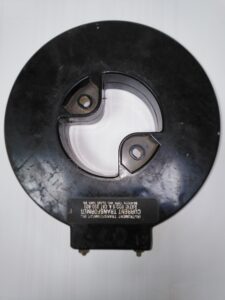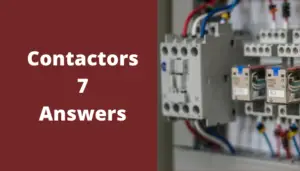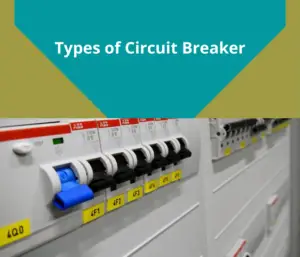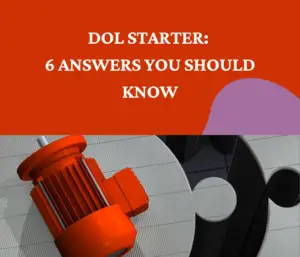Miniature circuit breakers are electromagnetic devices that protect an electric circuit against short circuits and over-current.
Table of Contents
types of MCB and their uses
There are several types of Miniature Circuit Breakers (MCBs) available, each designed for specific applications and rated according to their trip characteristics and intended use. The primary types of MCBs include:
-
Type B MCBs (B-Curve):
- Use: General-purpose MCBs suitable for most residential and commercial applications. They offer moderate overload protection and are commonly used for lighting circuits and general power distribution.
-
Type C MCBs (C-Curve):
- Use: Designed for applications with moderate inrush currents or equipment that has motors or transformers. They provide better protection against short-circuits and are often used in industrial settings.
-
Type D MCBs (D-Curve):
- Use: Intended for circuits with high inrush currents, such as those associated with equipment like motors, transformers, and fluorescent lighting. They offer strong short-circuit protection and are used in industrial environments.
-
Type K MCBs (K-Curve):
- Use: Specifically designed for circuits with very high inrush currents, like those found in welding machines, X-ray equipment, and some industrial loads. They provide excellent short-circuit protection.
-
Type Z MCBs (Z-Curve):
- Use: Suitable for circuits with electronic equipment, computers, and other sensitive loads. They have a delayed trip characteristic to accommodate inrush currents from electronic devices.
-
Selective MCBs:
- Use: These MCBs are designed for applications where coordination or selectivity is critical. They are used in complex electrical systems to ensure that only the nearest MCB to the fault trips, allowing the rest of the system to remain energized.
-
Ground Fault MCBs (Type F and Type G):
- Use: These MCBs are equipped with ground fault protection to detect ground faults (earth faults) in circuits and provide additional safety. Type F is used for general-purpose applications, while Type G is designed for sensitive circuits like those in hospitals and IT installations.
-
Residual Current Circuit Breakers (RCCBs):
- Use: RCCBs are not strictly MCBs but are often integrated with MCBs. They provide protection against ground faults and are commonly used in residential and commercial applications to prevent electric shocks.
-
Miniature Circuit Breaker with Overload Protection (RCBO):
- Use: RCBOs combine the functions of an MCB (overcurrent protection) and an RCCB (ground fault protection) in a single device. They are used in applications where both forms of protection are required.
Selecting the appropriate MCB type ensures that the circuit is adequately protected against overcurrents and short circuits while allowing for efficient operation.
What Type of MCB Should I Use With Domestic Loads?
For domestic loads, the most suitable type of MCB is typically a Type B MCB because it is designed to handle the characteristics of residential circuits and appliances.
Why Type B?
- Trip Range: It trips at 3 to 5 times the rated current, making it sensitive enough to detect faults in residential wiring without being overly sensitive to minor surges.
- Common Domestic Applications:
- Lighting circuits: Protects lights from overcurrent or short circuits.
- Socket outlets: Ideal for general-purpose loads like TVs, computers, and small kitchen appliances.
- Low-powered household appliances: Safeguards washing machines, refrigerators, and microwave ovens.
What is The Main MCB Function?
MCB or Miniature Circuit Breakers are protection devices to switch OFF electrical circuits during any abnormal condition in the electrical circuits, such as short circuit and overload conditions.
Based on the curve of the MCB it trips during any over-current situation to protect the load.
What does the MCB rating mean?
The current rating of a miniature circuit breaker (MCB) represents the maximum current it can handle under normal operating conditions without tripping.
The voltage rating, on the other hand, defines the maximum operating voltage of the circuit the MCB is designed to protect. While the MCB’s voltage rating can exceed the circuit voltage, it must never be lower.
If the MCB’s current rating is lower than the load current, it will trip unnecessarily. Similarly, if the MCB’s voltage rating is lower than the circuit voltage, the breaker’s insulation could fail, leading to a potential short circuit.
What is the meaning of 10kA in MCB?
The “10KA” marking on an MCB indicates its short-circuit withstand capacity, also known as its ultimate breaking capacity. This value represents the maximum short-circuit current the breaker can safely interrupt without damage.
If the short-circuit current exceeds this 10KA rating, the MCB will fail and become unusable.
During a short circuit, the current is typically measured in kiloamperes (kA). If the MCB’s short-circuit withstand capacity is lower than the actual short-circuit current, both the breaker and the circuit it protects may sustain significant damage.
Can I use mCB as an on/off switch?
Yes, you can use an MCB (Miniature Circuit Breaker) as an on/off switch, but it is not ideal for frequent switching operations. MCBs are primarily designed for circuit protection by automatically tripping in the event of overcurrent or short circuits, not for regular manual operation.
Here’s why:
- Durability Concerns:
MCBs are rated for a limited number of switching operations (mechanical endurance). Frequent use as a switch can reduce their lifespan and compromise their reliability. - Arc Generation:
Switching an MCB on and off generates electrical arcs, which can lead to wear and tear on the internal components. - Design Purpose:
MCBs are designed to provide safety and protection, not to act as routine control devices. For frequent switching, it is better to use devices such as regular switches or contactors that are designed for this purpose.
If you only need occasional switching, an MCB can be used. However, for frequent operations, it’s advisable to use a proper switch to ensure safety and longevity of your electrical system.
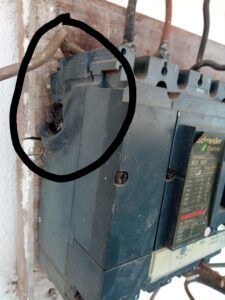
What causes a miniature breaker to melt?
A miniature circuit breaker (MCB) can melt due to several factors, all of which involve excessive heat being generated and not dissipated properly. Here are the most common causes:
1. Overloading
- When the current flowing through the MCB exceeds its rated capacity for an extended period, the excessive heat generated can cause the breaker to overheat and eventually melt.
- Example: Connecting too many devices to a circuit protected by a low-rated MCB.
2. Loose Connections
- Poor or loose terminal connections at the MCB cause arcing and high resistance, leading to localized heating. Over time, this can melt the breaker casing or internal components.
- Tip: Always ensure that connections are tight and secure during installation.
3. Short Circuits
- A short circuit generates extremely high currents in a very short time. If the MCB’s short-circuit interrupt capacity is insufficient, it may fail to interrupt the current, causing it to overheat and melt.
4. Faulty or Worn-Out MCB
- Over time, MCBs can degrade due to wear and tear, repeated tripping, or manufacturing defects. A faulty breaker may fail to trip during an overload or short circuit, allowing excessive current to pass and cause overheating.
5. Poor Quality or Counterfeit Breakers
- Cheap or counterfeit MCBs may not meet proper safety standards and can fail to handle even normal current loads, leading to overheating and melting.
6. Environmental Factors
- High ambient temperatures or insufficient ventilation around the electrical panel can exacerbate heat buildup, causing the MCB to overheat.
- Example: Installing the MCB in a poorly ventilated enclosure or near heat-emitting devices.
7. Improper Sizing
- Using an MCB with a current rating lower than the circuit’s actual load can cause constant overloading, leading to excessive heat generation and potential melting.
8. Internal Faults in Electrical Devices
- A malfunctioning electrical appliance on the circuit may draw excessive current or cause frequent short circuits, overloading the MCB and causing it to overheat.
Prevention Tips
- Proper Sizing: Always choose an MCB with the correct current and voltage ratings for your circuit.
- High-Quality MCBs: Use trusted brands that comply with safety standards like IEC 60898.
- Regular Maintenance: Inspect and tighten connections periodically.
- Ventilation: Ensure good ventilation around the distribution panel to avoid overheating.
- Avoid Overloading: Do not connect more devices than the circuit is designed to handle.
- Periodic Testing: Test MCBs periodically to ensure they trip as intended.
Identifying and addressing the root cause of overheating is crucial to maintaining safety and preventing electrical fires.
Don’t Leave Empty-Handed!
Install my Free Android App on Google Play:
Electrical Cables Most Common Tables “Cables Tables”
And, my Electrical Calculations App “Fast Electrical Calculator”
Discover more great content by subscribing to My channel
Looking to stay ahead of the game in the world of electrical engineering? Subscribe to my YouTube channel and gain access to exclusive content you won’t find anywhere else!
The staff I recommend
(Amazon Affiliate Links to products I believe are high quality):
- Economy 120 Volt/60Hz AC Power Source – Step-Down Voltage & Frequency Converters 1800W
- UNI-T Digital Multimeter Tester UT139C
- 50-Amp Extension Cord for RV “100ft”
- Voltage Stabilizer 110/220v
- Hair Dryer “best selling“
- TOSHIBA EM131A5C-BS Countertop Microwave Ovens
Disclaimer: This contains affiliate links to Amazon products. I may earn a commission for purchases made through these links.

